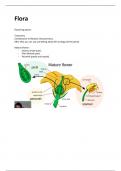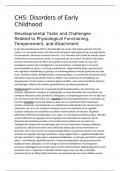Samenvatting
Summary Biodiversity
- Vak
- Biodiversity
- Instelling
- Radboud Universiteit Nijmegen (RU)
This is a very extensive summary of the course Biodiversity. It contains all the information from the lectures. This summary included the characteristics with visualization for proper recognition and taxonomy. This summary will help you to receive a high exam grade. Good luck!
[Meer zien]





